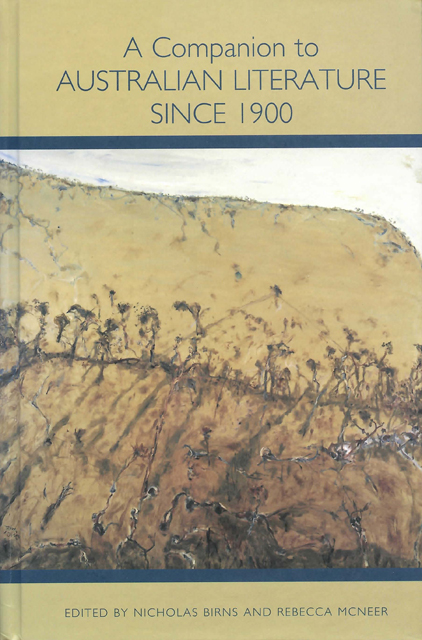Book contents
- Frontmatter
- Dedication
- Contents
- Chronology of Main Events in Australian History, 1901–2005
- Acknowledgments
- Note on the Cover Illustration and Artist
- Introduction
- Part 1 Identities
- Part 2 Writing Across Time
- Part 3 International Reputations
- Part 4 Writers and Regions
- Part 5 Beyond the Canon
- Notes on the Contributors
- Index
13 - Australian Drama since 1970
Published online by Cambridge University Press: 10 March 2023
- Frontmatter
- Dedication
- Contents
- Chronology of Main Events in Australian History, 1901–2005
- Acknowledgments
- Note on the Cover Illustration and Artist
- Introduction
- Part 1 Identities
- Part 2 Writing Across Time
- Part 3 International Reputations
- Part 4 Writers and Regions
- Part 5 Beyond the Canon
- Notes on the Contributors
- Index
Summary
The Year 1968 Marked the introduction of systematic subsidy for the performing arts in Australia. This had far-reaching effects, laying the foundation for the establishment of ongoing professional companies that provided the infrastructure for developing and producing the work of Australian theater writers in a commercial context. The concurrent changes that affected playwrights included the beginnings of press attention to Australian writing and the establishment of publishing houses dedicated to transforming the ephemeral into the tangible, that is, printed texts. In 2005, David Williamson (b. 1942), one of the most popular and most frequently produced playwrights in Australia, announced his retirement. In many ways Williamson’s retirement marks the end of an era in Australian theater. Williamson’s career spanned the years from 1970 to 2005, and his career was shaped and made possible by the changes in access to funding in the 1970s and the ways in which Australian theater has been framed in the national imaginary. When he began writing, theater production was seen as the search for the expression of a singular national voice. In the intervening decades that voice has proved to be multiple rather than singular.
The late 1960s and early 1970s are usually described as one of the most important moments in Australian theater history. In Australia, as in Europe and North America, these years marked a time of theatrical revolution, where practitioners sought to radically reinvent accepted concepts of theater practice. One of the expressions of this reinvention was “alternative theater” movements exploring non-traditional performance styles and narratives. In Australia, the alternative theater movement, particularly represented by Nimrod in Sydney and the Australian Performing Group (APG) at the Pram Factory and LaMama in Melbourne, was labeled the “new wave.”
The New Wave was a collection of writers, actors, designers, and directors whose work was recognized and validated as aggressively and distinctly Australian. The dramas written by the New Wave writers shared a number of characteristics. The works often explored expressions of male ritual, such as the social habits of males in bars and at football clubs.
- Type
- Chapter
- Information
- A Companion to Australian Literature since 1900 , pp. 219 - 232Publisher: Boydell & BrewerPrint publication year: 2010



